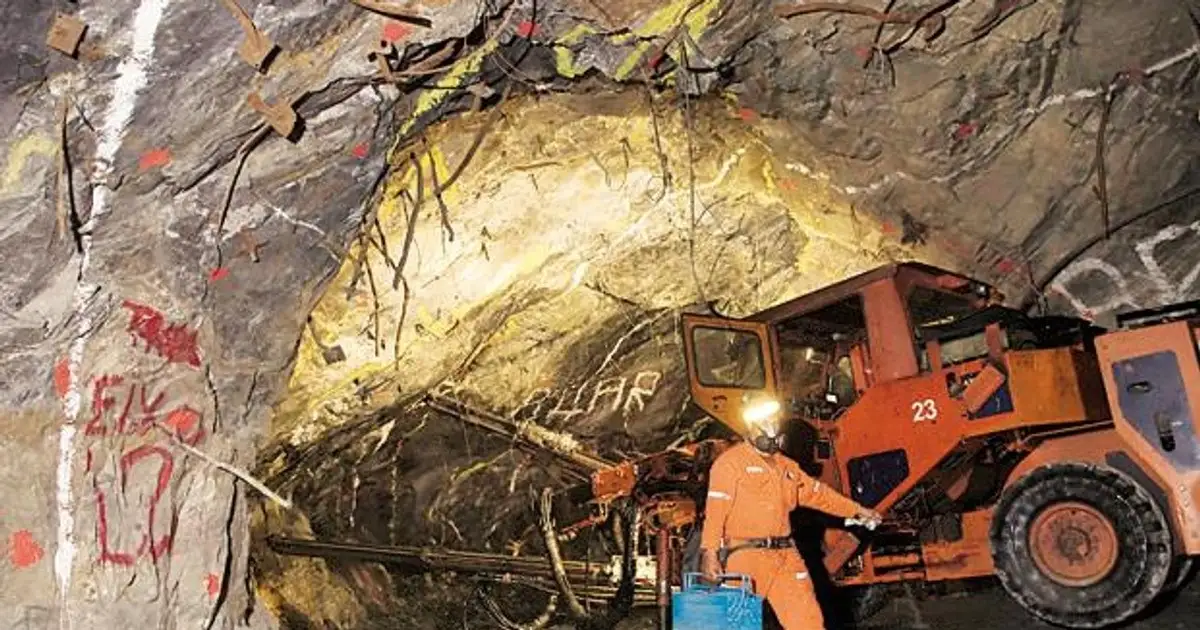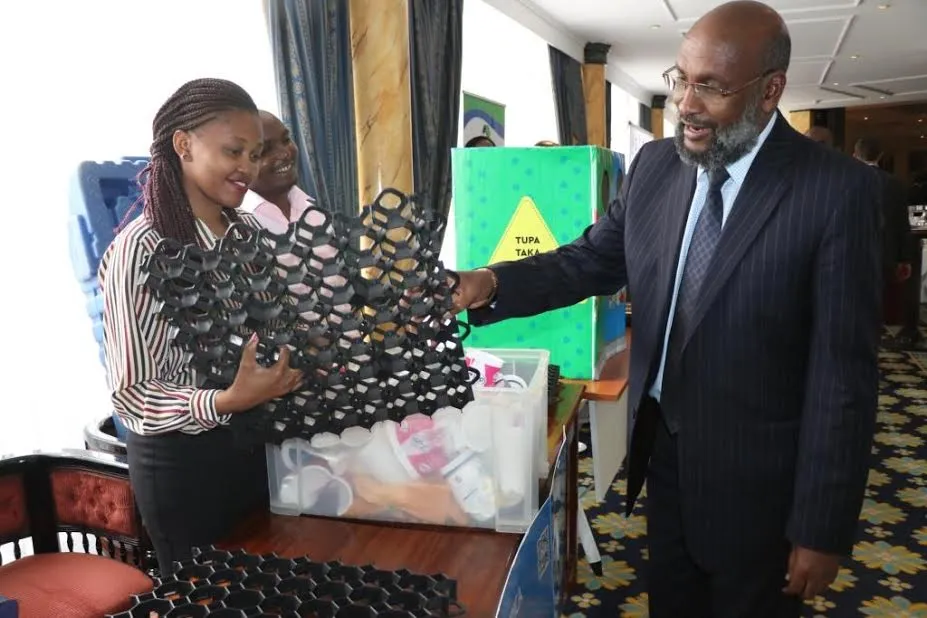Kenya has emerged at the forefront of a transformative economic development with the confirmation of its largest gold discovery in decades, a massive deposit valued at approximately Sh683 billion (US$5.29 billion) located in Kakamega County. The announcement by Shanta Gold Limited, a British mining firm listed on the London Stock Exchange, represents a watershed moment for Kenya’s mining sector and positions the East African nation as an emerging player in the continent’s precious metals industry.
The discovery at the Isulu-Bushiangala underground project comprises an impressive 1.27 million ounces of gold, marking the most significant mineral find in Kenya’s recent history. This substantial deposit has the potential to fundamentally reshape the country’s economic landscape, diversify its revenue streams, and establish Kakamega County as a major mining hub in the region.
Build the future you deserve. Get started with our top-tier Online courses: ACCA, HESI A2, ATI TEAS 7, HESI EXIT, NCLEX-RN, NCLEX-PN, and Financial Literacy. Let Serrari Ed guide your path to success. Enroll today.
Comprehensive Mining Infrastructure and Advanced Technology
The ambitious Isulu-Bushiangala project, as detailed in the Environmental Impact Assessment (EIA) report submitted to the National Environment Management Authority (NEMA), outlines plans for a sophisticated large-scale underground mining operation spanning approximately 337 acres in Kakamega South Sub-county. The project represents a significant departure from the small-scale artisanal mining that has traditionally characterized Kenya’s gold sector.
Shanta Gold Kenya Limited, the local subsidiary of the London-listed parent company, plans to deploy cutting-edge Long Hole Open Stoping technology for ore extraction. This advanced mining method is specifically designed to maximize resource recovery while minimizing surface disruption and environmental impact—a critical consideration given the site’s proximity to sensitive ecological areas.
“The project is aimed at obtaining the required authorization to mine the Isulu-Bushiangala gold resources for economic purposes,” the company stated in an official announcement. The firm emphasized that the initiative would lead to “the enhancement of local economic development through job and business opportunities and significant contributions to the government of Kenya through taxes, royalties and revenue contributions, which are likely to transfer into the local and regional economic growth.”
The mining infrastructure will be comprehensive and state-of-the-art. Central to the operation will be a processing plant with a capacity to handle 1,500 tonnes of ore per day, ensuring efficient extraction and processing of the gold-bearing rock. To power this substantial operation, Shanta Gold will construct a dedicated 12-megawatt power station, ensuring energy security and operational reliability independent of the national grid.
Additionally, the project includes plans for a tailings storage facility, which will be essential for the safe management of mining waste products in compliance with environmental regulations. The entire construction phase is projected to cost between Sh22 billion and Sh27 billion (approximately US$170 million to US$209 million), representing one of the largest mining investments in Kenya’s history.
The mine is designed for an operational lifespan of at least eight years, though this period could be extended if additional ore bodies are discovered or if mining efficiency improvements allow for the economic extraction of lower-grade ore. This timeline provides a substantial window for revenue generation and economic development in the region.
Transforming Kenya’s Position in African Gold Mining
Kenya’s current standing in Africa’s gold mining industry is modest, with production figures that pale in comparison to the continent’s major producers. In 2023, Kenya produced approximately 410 kilograms of gold—a figure that represents a fraction of the output from established mining powerhouses such as Ghana, South Africa, and Sudan, each of which produces millions of ounces annually.
Despite this limited production history, Kenya has been steadily gaining recognition as an attractive destination for mining exploration and investment. The country ranked 6th in Africa for mining investment attractiveness in the 2023 Fraser Institute Survey, a respected annual assessment of global mining jurisdictions. This ranking reflects Kenya’s improving regulatory environment, geological potential, and investment climate.
The discovery of the US$5.29 billion Isulu-Bushiangala deposit represents a potential inflection point for Kenya’s mining sector. If successfully developed, this single project could dramatically increase the country’s gold production, potentially placing Kenya among Africa’s more significant gold producers and signaling a decisive shift from small-scale artisanal mining operations toward industrial-scale commercial production.
This transformation aligns with the Kenyan government’s broader economic diversification strategy. For decades, Kenya’s economy has been heavily dependent on agriculture and tourism as primary revenue generators. While these sectors remain vital, they are vulnerable to external shocks such as climate variability, global economic downturns, and geopolitical instability. A robust mining sector would provide an additional economic pillar, creating resilience through diversification.
Revenue Sharing and Community Development Framework
One of the most significant aspects of the Isulu-Bushiangala project is the comprehensive revenue-sharing framework outlined in the EIA report, which promises substantial financial benefits for national, county, and community stakeholders. This framework is governed by Kenya’s Mining Act and associated regulations, which establish clear mechanisms for distributing mining revenues.
Under the current regulatory framework, 3% of gross gold sales must be paid as royalties to the government. This royalty structure ensures that Kenya receives consistent revenue throughout the mine’s operational life, providing a direct financial return on the extraction of national resources. The distribution of these royalties is designed to benefit multiple levels of governance and local communities directly affected by mining operations.
Of the total royalty payments, 20% is allocated to the Kakamega County government, enabling local authorities to invest in infrastructure, social services, and development projects that benefit county residents. An additional 10% is designated for local communities through targeted development projects, ensuring that those living closest to the mining operations receive direct benefits from the resource extraction occurring in their vicinity.
Beyond the statutory royalty payments, Shanta Gold has committed to contributing 1% of the total gold output value directly to host communities. This commitment aligns with the Mining (Community Development Agreement) Regulations and represents an additional revenue stream specifically earmarked for community development initiatives. These funds could be invested in education facilities, healthcare infrastructure, water systems, roads, and other projects identified as priorities by local communities.
Economists and development experts suggest that these revenue streams could be transformative for western Kenya, a region that has historically lagged behind other parts of the country in terms of economic development and infrastructure. The consistent flow of mining revenues over the project’s eight-year lifespan—and potentially beyond—could finance significant improvements in local living standards and economic opportunities.
Economic Multiplier Effects and Employment Generation
Beyond the direct financial contributions through royalties and taxes, the Isulu-Bushiangala project is expected to generate substantial indirect economic benefits through employment creation and business development. The construction phase alone will require hundreds of workers with diverse skill sets, from heavy equipment operators and engineers to logistics coordinators and administrative staff.
During the operational phase, the mine will employ a permanent workforce to manage extraction, processing, maintenance, security, and administrative functions. These direct mining jobs typically offer wages significantly above the regional average, providing stable, well-compensated employment for workers and their families. For a region where formal employment opportunities are limited, these jobs could have profound impacts on household incomes and living standards.
The economic benefits extend far beyond direct employment at the mine itself. Mining operations generate demand for numerous support services and supplies, creating opportunities for local businesses and entrepreneurs. These include catering and hospitality services for mine workers, transportation and logistics services, construction contractors, equipment maintenance providers, security services, and suppliers of consumables ranging from protective equipment to office supplies.
This multiplier effect—where each direct mining job supports additional employment in supporting industries—could significantly expand the project’s overall employment impact. Economic studies of mining projects in other regions suggest that each direct mining job can support two to three additional jobs in related sectors, amplifying the project’s contribution to local employment.
Furthermore, the injection of wages and business income into the local economy will increase consumer spending in Kakamega County, benefiting retailers, service providers, and other businesses throughout the region. This increased economic activity could stimulate additional entrepreneurship and business formation, creating a virtuous cycle of economic development.
The project is also expected to attract foreign direct investment (FDI) to Kenya’s mining sector more broadly. Successful development of the Isulu-Bushiangala deposit could serve as a demonstration project, showcasing Kenya’s capacity to host world-class mining operations and potentially attracting other international mining companies to explore and develop the country’s mineral resources.
One decision can change your entire career. Take that step with our Online courses in ACCA, HESI A2, ATI TEAS 7, HESI EXIT, NCLEX-RN, NCLEX-PN, and Financial Literacy. Join Serrari Ed and start building your brighter future today.
Environmental Considerations and Sustainability Concerns
While the economic benefits of the gold discovery are substantial, the project also raises important environmental and social considerations that must be carefully managed. The Isulu-Bushiangala site’s proximity to the Kakamega Forest—one of Kenya’s most important biodiversity hotspots and the country’s only remaining indigenous tropical rainforest—has heightened concerns about potential environmental impacts.
The Kakamega Forest is home to numerous endemic plant and animal species and serves as a critical water catchment area for the region. Any mining activities in close proximity to this ecosystem must be carefully designed and monitored to prevent pollution, habitat degradation, or disruption of hydrological systems. The forest also has significant cultural and recreational value, attracting eco-tourists and serving as an important resource for surrounding communities.
Environmental advocacy groups and local communities have expressed concerns about potential impacts on water quality, given that the mining site is near key river catchments that provide water for agricultural, domestic, and industrial uses throughout the region. Mining operations can potentially affect water resources through changes to drainage patterns, contamination from mining chemicals, or increased sediment loads in waterways.
Air quality is another consideration, as mining and processing operations can generate dust and emissions. While underground mining typically has lower air quality impacts than open-pit mining, proper ventilation systems, dust suppression measures, and emissions controls will be essential.
The management of mining waste, particularly tailings (the fine-grained residue that remains after ore processing), is critical. The planned tailings storage facility must be designed, constructed, and operated to prevent leakage or failure that could contaminate soil and water resources. International best practices for tailings management have evolved significantly following several high-profile tailings dam failures globally, and Shanta Gold will be expected to apply the highest contemporary standards.
In response to these environmental concerns, Shanta Gold has pledged to adhere to Kenya’s environmental regulations and international best practices in mining operations. The company’s EIA report, submitted to NEMA, is a critical component of this commitment, as it provides a comprehensive assessment of potential environmental impacts and outlines mitigation measures.
NEMA’s review and approval process will be crucial in ensuring that environmental safeguards are adequate and that the company’s commitments are enforceable through licensing conditions. Civil society organizations, environmental groups, and local communities will play important watchdog roles in monitoring compliance with environmental standards throughout the project’s life.
Land Rights and Community Resettlement Challenges
Another significant consideration is the issue of land acquisition and potential displacement of communities currently residing in or using the project area. Mining projects, particularly those of this scale, typically require acquisition of substantial land areas for the mine itself, processing facilities, waste storage, access roads, and buffer zones.
Land issues are often contentious in Kenya, where historical land injustices, unclear tenure systems, and population pressure have created complex and sometimes volatile situations. In mining contexts, these challenges are amplified by the high economic value of mineral resources and concerns about whether affected communities receive fair compensation and benefit adequately from mining activities.
Shanta Gold has acknowledged these concerns and committed to following Kenya’s Land Act and international resettlement standards in its land acquisition processes. International standards, particularly those articulated in documents such as the International Finance Corporation’s Performance Standards, require that any displacement be minimized, that affected persons receive fair compensation for lost assets, and that livelihoods be restored or improved.
These standards emphasize consultation with affected communities, transparent processes for determining compensation, provision of replacement housing that meets or exceeds previous living standards, and support for livelihood restoration. They also recognize that some impacts go beyond physical displacement to include loss of access to resources, disruption of social networks, and cultural impacts.
Implementation of these commitments will require careful planning, substantial resources, and genuine engagement with affected communities. The quality of the resettlement and compensation process will significantly influence local attitudes toward the project and can affect social stability in the mining area.
Regulatory Approval Process and Project Timeline
The Isulu-Bushiangala project’s progression is now contingent on regulatory approvals, most crucially from NEMA regarding the environmental impact assessment. NEMA’s review process involves assessment of the EIA report, public participation processes where stakeholders can raise concerns and suggestions, and ultimately a decision on whether to grant environmental approval and under what conditions.
This regulatory review is typically thorough and can take several months or longer, depending on the complexity of the project, the quality of the EIA documentation, and the extent of public concerns raised during consultation processes. For a project of this magnitude and sensitivity, given its environmental context, a comprehensive review is essential.
Beyond environmental approval, the project will require various other permits and licenses from different government agencies, including mining licenses from the Ministry of Mining, water use permits, building permits, and potentially forestry clearances if any project components affect forest areas. Coordinating these various approval processes and ensuring compliance with all regulatory requirements represents a significant undertaking.
If approvals are secured, the project would then move into the construction phase, which is expected to take several years given the scale and technical complexity of the infrastructure required. Following construction, there would be a commissioning period where systems are tested and refined before full-scale commercial production begins.
Regional and National Strategic Implications
The successful development of the Isulu-Bushiangala gold project could have strategic implications extending beyond the immediate economic benefits. For Kakamega County specifically, it could establish the region as Kenya’s mining capital, potentially attracting additional mining investment as other companies seek to explore for gold and other minerals in the area.
From a national perspective, the project contributes to Kenya’s Vision 2030 development agenda, which emphasizes economic diversification and increased contribution from the mining sector. Kenya’s geological surveys have indicated potential for various mineral resources beyond gold, including titanium, coal, and rare earth elements. Successful development of gold mining could catalyze broader mining sector growth.
The project also has implications for Kenya’s position in regional economic integration frameworks. As a member of the East African Community, Kenya’s economic development and industrial capacity affect regional dynamics and trade relationships. A robust mining sector could position Kenya as a supplier of processed minerals and mining equipment and services to neighboring countries.
Conclusion: Balancing Opportunity and Responsibility
Kenya’s US$5.29 billion gold discovery at Isulu-Bushiangala represents a transformative opportunity for national and regional economic development. If successfully developed with appropriate environmental safeguards and equitable benefit-sharing mechanisms, the project could generate substantial revenues, create employment, stimulate business development, and help diversify Kenya’s economic base.
However, realizing these benefits while managing environmental risks, ensuring fair treatment of affected communities, and maintaining social stability will require sustained commitment from all stakeholders—the mining company, government regulators, local authorities, and civil society organizations. The ultimate success of this project will be measured not just in ounces of gold extracted or revenues generated, but in whether it contributes to inclusive, sustainable development that improves lives while protecting Kenya’s environmental heritage for future generations.
As the project moves through the regulatory approval process and potentially toward development, Kenya has an opportunity to demonstrate that mineral resource extraction can be conducted responsibly and can serve as a foundation for broader economic transformation. The eyes of the mining industry, development community, and environmental advocates will be watching closely as this historic project unfolds.
Ready to take your career to the next level? Join our Online courses: ACCA, HESI A2, ATI TEAS 7 , HESI EXIT , NCLEX – RN and NCLEX – PN, Financial Literacy!🌟 Dive into a world of opportunities and empower yourself for success. Explore more at Serrari Ed and start your exciting journey today! ✨
Track GDP, Inflation and Central Bank rates for top African markets with Serrari’s comparator tool.
See today’s Treasury bonds and Money market funds movement across financial service providers in Kenya, using Serrari’s comparator tools.
photo source: Google
By: Montel Kamau
Serrari Financial Analyst
14th November, 2025
Article, Financial and News Disclaimer
The Value of a Financial Advisor
While this article offers valuable insights, it is essential to recognize that personal finance can be highly complex and unique to each individual. A financial advisor provides professional expertise and personalized guidance to help you make well-informed decisions tailored to your specific circumstances and goals.
Beyond offering knowledge, a financial advisor serves as a trusted partner to help you stay disciplined, avoid common pitfalls, and remain focused on your long-term objectives. Their perspective and experience can complement your own efforts, enhancing your financial well-being and ensuring a more confident approach to managing your finances.
Disclaimer: This article is for informational purposes only and does not constitute financial advice. Readers are encouraged to consult a licensed financial advisor to obtain guidance specific to their financial situation.
Article and News Disclaimer
The information provided on www.serrarigroup.com is for general informational purposes only. While we strive to keep the information up to date and accurate, we make no representations or warranties of any kind, express or implied, about the completeness, accuracy, reliability, suitability, or availability with respect to the website or the information, products, services, or related graphics contained on the website for any purpose. Any reliance you place on such information is therefore strictly at your own risk.
www.serrarigroup.com is not responsible for any errors or omissions, or for the results obtained from the use of this information. All information on the website is provided on an as-is basis, with no guarantee of completeness, accuracy, timeliness, or of the results obtained from the use of this information, and without warranty of any kind, express or implied, including but not limited to warranties of performance, merchantability, and fitness for a particular purpose.
In no event will www.serrarigroup.com be liable to you or anyone else for any decision made or action taken in reliance on the information provided on the website or for any consequential, special, or similar damages, even if advised of the possibility of such damages.
The articles, news, and information presented on www.serrarigroup.com reflect the opinions of the respective authors and contributors and do not necessarily represent the views of the website or its management. Any views or opinions expressed are solely those of the individual authors and do not represent the website's views or opinions as a whole.
The content on www.serrarigroup.com may include links to external websites, which are provided for convenience and informational purposes only. We have no control over the nature, content, and availability of those sites. The inclusion of any links does not necessarily imply a recommendation or endorsement of the views expressed within them.
Every effort is made to keep the website up and running smoothly. However, www.serrarigroup.com takes no responsibility for, and will not be liable for, the website being temporarily unavailable due to technical issues beyond our control.
Please note that laws, regulations, and information can change rapidly, and we advise you to conduct further research and seek professional advice when necessary.
By using www.serrarigroup.com, you agree to this disclaimer and its terms. If you do not agree with this disclaimer, please do not use the website.
www.serrarigroup.com, reserves the right to update, modify, or remove any part of this disclaimer without prior notice. It is your responsibility to review this disclaimer periodically for changes.
Serrari Group 2025












